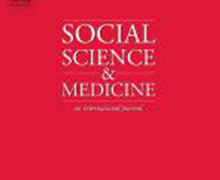본문
Individual and community social capital, mobility restrictions, and psychological distress during the COVID-19 pandemic: a multilevel analysis of a representative US survey

By Prof. Harris Hyunsoo Kim
Department of Sociology
PURE Research Profile
harrishkim@ewha.ac.kr
In the U.S., as elsewhere, depression has risen since the onset of the pandemic. However, not everyone has experienced this impact equally; a critical question is why. In this paper, we propose that unequal access to social capital may partly account for the unequal distribution of harm to mental wellbeing during the pandemic. The present study is thus motivated by the following question: does social capital, measured at individual and contextual (community) levels, provide a buffer against the harmful effect of social/mobility restrictions intended to curb the coronavirus disease? Using a (pooled cross-sectional) probability sample of U.S. respondents, we provide evidence on how individual/contextual stocks of social capital are related to psychological distress during the coronavirus crisis.
This paper explores the role of social capital in mitigating the mental health harms of social/mobility restrictions instigated in the wake of the COVID-19 pandemic. We test whether: (a) social capital continued to predict lower mental distress during the pandemic; and (b) whether social capital buffered (moderated) the harm of social/ mobility restrictions on psychological distress. In addition, we test the level at which social capital mitigation effects operated, i.e., at the individual- and/or contextual-level. To do so, we apply multilevel models to three waves of the COVID-19 Household Impact Survey consisting of probability samples of U.S. adults (with the average interview completion rate of 93%). In a novel approach, we explore two modes of capturing contextual social capital: aggregated individual-level survey responses and independently measured social capital indices (SCIs). Findings show that at the individual level social capital was associated with lower psychological distress. It also buffered the harm of restrictions: increasing restrictions had a weaker effect on distress among individuals interacting with neighbors more frequently. Importantly, mitigating processes of contextual social capital appeared conditional on how it was measured. Using aggregated survey responses, contextual social capital had no direct effect on distress but exerted an additional buffering role: individuals in counties with higher average neighbor-interaction experienced a weaker impact of restrictions. Using the independent SCI measures, we found county social capital reduced distress. However, its negative effect on distress becomes increasingly weaker the more restrictions an individual reported: where individuals reported lower restrictions, higher county SCI reduced distress; however, where individuals reported higher restrictions, higher county SCI had no effect on distress. More restrictive environments thus cut individuals off from the benefits of higher county social capital as measured using the SCI.
Our findings have important implications for understanding the role of social capital for mental well-being during “extraordinary times”, such as the current pandemic. Firstly, weaker ties, especially neighbor connectivity, appeared most important for psychological distress. Individuals who interacted more frequently with neighbors reported less distress and experienced a weaker positive impact of social/mobility restrictions on their distress. In addition, individuals living in counties with higher aggregate neighbor-connectivity reported a further cushioning effect from the harm of restrictions. Thus, as hypothesized, localities performed a vital role in compensating for the contraction of wider in-person connectivity, especially where restrictions were higher. In contrast, communicating more frequently by phone/electronically with friends/family had no association with psychological distress, nor did it buffer restrictions. This may be because this stronger-tie connectivity was not in-person, limiting its effectiveness. During non-crisis times, remote strong-tie connectivity may reduce mental-distress. However, in the context of COVID-19, the scarcity of in-person contact in general might mean that remote-interaction, even with strong-ties, does not suffice, and any type of physical interaction becomes increasingly important. Alternatively, individuals experiencing greater distress could have reached out more to friends/family, confounding any ameliorating impact it may have had on distress. Secondly, these findings shed light on how, and at which level, social capital appears to operate during the pandemic. At the individual-level, (weaker-tie) social capital appears to operate as both a driver of lower distress (a direct-effect) and a buffer of the impact of stressors, namely restrictions (a moderation effect). Processes at the contextual level, however, appear more mixed and our understanding is conditional on how contextual-level social capital is measured. When operationalized using aggregated scores, contextual social capital has no direct effect on distress after adjusting for individual-level social capital. However, (weaker-tie) aggregated social capital does buffer the impact of restrictions on distress, even after adjusting for its individual-level buffering role. In other words, both speaking to neighbors more frequently but also living in counties where neighbors interact more frequently benefits mental well-being.
In sum, this paper provides some of the first evidence that individuals’ social capital, especially neighbor connectivity, may serve a critical support role during the pandemic, cushioning the harm that pandemic-related restrictions have on mental health. In addition, we find conflicting evidence for how contextual-level social capital has operated during the pandemic. It may have operated as an additional buffer against the pain of restrictions (when measured using aggregate individual scores). Alternatively, the pandemic may have severed the support link between contextual social capital and mental health (when measured using independent measures). These findings make key contributions to our ongoing understanding of how social capital should be conceptualized as well as raising important awareness for ongoing debates into how contextual social capital should be measured and operationalized.
* Related Article
James Laurence, Harris Hyun-soo Kim, Individual and community social capital, mobility restrictions, and psychological distress during the COVID-19 pandemic: a multilevel analysis of a representative US survey, Social Science & Medicine 287
